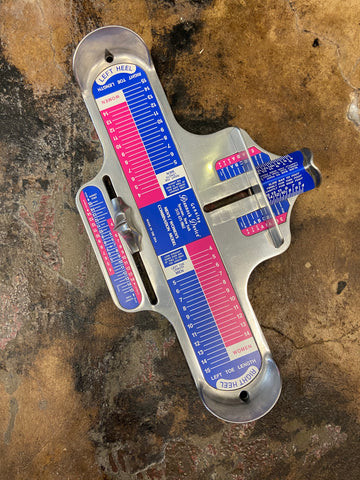Decoding Euro Size 39: Your Ultimate Shoe Size Conversion Guide
Finding the perfect shoe fit across different sizing systems can be challenging. When shopping internationally or exploring European brands, understanding Euro shoe sizes becomes essential. If you’ve ever wondered about Euro size 39, you’re not alone. This comprehensive guide will decode Euro size 39 and provide you with the necessary conversions to US and UK sizes, ensuring you find the right fit every time.
Euro size 39 is a common shoe size, but its equivalent in US and UK systems can vary slightly between men’s and women’s shoes. For women, Euro size 39 typically translates to a US size 8.5 and a UK size 6.5. In men’s sizing, a Euro 39 is closer to a US size 6 and a UK size 5.5. It’s important to note these are general conversions, and individual brand sizing can sometimes differ. Always consult size charts specific to the brand you are considering for the most accurate fit.
Here are detailed shoe size conversion charts to help you understand Euro size 39 in relation to US and UK sizes for women, men, and kids:
Women’s Shoe Size Conversions (Focus on Euro 39)
| US Sizes | Euro Sizes | UK Sizes | Inches | CM |
|---|---|---|---|---|
| 8 | 38-39 | 6 | 9.5″ | 24.1 |
| 8.5 | 39 | 6.5 | 9.6875″ | 24.6 |
| 9 | 39-40 | 7 | 9.875″ | 25.1 |
Men’s Shoe Size Conversions (Focus on Euro 39)
| US Sizes | Euro Sizes | UK Sizes | Inches | CM |
|---|---|---|---|---|
| 6 | 39 | 5.5 | 9.25″ | 23.5 |
| 6.5 | 39 | 6 | 9.5″ | 24.1 |
| 7 | 40 | 6.5 | 9.625″ | 24.4 |
Big Kid Shoe Size Conversions (7 – 12 years) (Focus on Euro 39)
| US Sizes | Euro Sizes | UK Sizes | Inches | CM |
|---|---|---|---|---|
| 6 | 38 | 5 | 9.5″ | 24.1 |
| 6.5 | 38 | 5.5 | 9.625″ | 24.4 |
| 7 | 39 | 6 | 9.75″ | 24.8 |
Little Kid Shoe Size Conversions (4 – 7 years) (Up to Euro 34)
| US Sizes | Euro Sizes | UK Sizes | Inches | CM |
|---|---|---|---|---|
| 2.5 | 34 | 1.5 | 8.25″ | 21 |
| 3 | 34 | 2 | 8.5″ | 21.6 |
To ensure the most accurate shoe size, measuring your foot is highly recommended. Follow these simple steps to measure your foot length:
- Place a piece of paper on the floor against a wall.
- Stand on the paper with your heel against the wall.
- Mark the position of your longest toe on the paper.
- Measure the distance from the wall to the mark in inches or centimeters.
- Use the conversion charts above to find your corresponding US, UK, and Euro shoe size.
Remember, these charts provide a general guideline for shoe size conversion, especially for Euro size 39 and its equivalents. For optimal comfort and fit, especially when purchasing online, always refer to the brand’s specific size chart and consider reading customer reviews regarding sizing accuracy.
 Brannock device measuring foot size for accurate shoe fitting, essential for determining Euro size 39 equivalent
Brannock device measuring foot size for accurate shoe fitting, essential for determining Euro size 39 equivalent
Using a Brannock device, commonly found in shoe stores, can provide an even more precise measurement of your foot length and width. This tool is particularly helpful in determining the correct shoe size, including finding your equivalent of a Euro size 39 in different brands and styles. It measures both the length and width of your foot, leading to a more comfortable and accurate fit, especially important for athletic shoes or boots where precise sizing is crucial.
FAQ & Tips
-
What if I am between shoe sizes? It’s generally recommended to size up, particularly for active and sports footwear like running shoes and hiking boots. This extra space accommodates foot swelling during activity and prevents discomfort.
-
Does 0.5 size make a difference in shoes? Absolutely! Even a half size difference can significantly impact comfort. Shoes that are too small can lead to pain, blisters, and even injuries like bunions or lost toenails, common issues for runners.
-
Is one foot bigger than the other? Yes, it’s very common to have one foot slightly larger than the other. Always fit shoes to the larger foot. Purchase shoe pairs based on the size of your larger foot to ensure comfort.
-
Should shoes be tight or loose? Shoes should be neither too tight nor too loose. You should have about a thumb’s width of space between your longest toe and the shoe’s end. Also, you should be able to snugly fit your index finger between your heel and the back of the shoe. If there isn’t enough space in either area, consider trying a different size.
-
When should I try on shoes? For runners, the best time to try on running shoes is at the end of the day. Feet tend to swell throughout the day, especially after activity. Trying shoes on when your feet are at their largest helps ensure a comfortable fit even after long runs.
-
What size shoe should I buy? While these charts are helpful guides, they are not a substitute for trying shoes on. If possible, visit a shoe store for professional fitting advice, especially when determining your ideal size, including your Euro size 39 equivalent, in specific shoe brands and styles.
